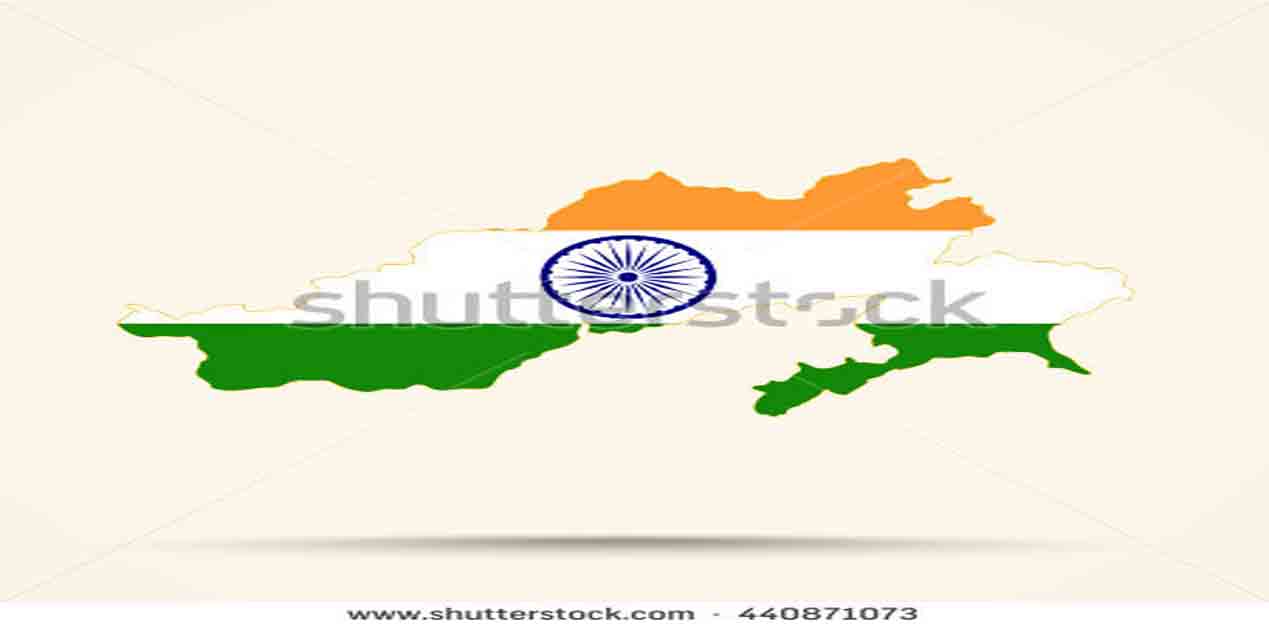Arunachal Pradesh (AP) is the 29th state of India, with a large area of 14 lakh sq. km. and population of only 14 lakh, placing it in 15th and 27th position, respectively on a national basis. However, the geopolitical significance of the province is much greater in relation to the country’s peripheral neighbours as well as from the perspective of consolidation of India’s statehood and development of its North-Eastern region. AP, after becoming a full-fledged state on 20th February, 1987 had enjoyed political stability till 2016 before frequent changes of governments started occurring. Interspersed with some periods of stable governance, changes in the political executive continued to occur thereafter.
Though the state of governance has not been of a high order, AP’s economy has been growing. State gross domestic product-wise, AP had achieved an annual growth of 16.5 percent in (2015-16) as per the Central Statistical Organisation’s data. Socio-ethnic harmony has also prevailed in a broad sense. Infrastructural progress has been evident, but much more remains to be achieved. The overall sensitivity of the state in India’s geopolitical framework has increased with China’s military disposition along its northern border with China, particularly after the Sino-Indian military stand-off at Doklam near the India-China-Bhutan tri-junction in June 2017 and Beijing’s continuous reference to AP as southern Tibet.
Special Constitutional Status
The state, home to 26 major tribes and nearly 100 sub-tribes, has a sensitive ethnological balance. However, inter-ethnic tensions within AP have been contained under India’s accommodative democratic constitutional system. Notwithstanding this backdrop, there is a demand from within a large section of the state’s polity that AP should enjoy a constitutional cover similar to that provided under Articles 371 (A) and 371 (G) pertaining to Nagaland and Mizoram respectively, which guarantee protection of the local tribal customary rights on land, its resources and forest produce, etc. The demand has extended to removal of the state governor’s special constitutional authority under Article 371 (H) on law and order by provisions similar to the above-cited Articles. The basic demand in the political realm has been that the full range of governmental authority, constitutionally bestowed to a province, should be with its elected executive, duly buttressed by special provisions referred to above. This is a sensitive area which is required to be astutely dealt with by the Government of India.
Naga Insurgents and Security Issue
Though the state’s governance has been on a positive trajectory, particularly since transformation of AP from an Union territory to a full-fledged state of the Indian Union with a legislature in February 1987, internal security issues have loomed large in the recent past, with the activities of Naga underground groups, particularly from the Nationalist Council of Nagalim (Khaplang) (NSCN-K) faction in the three eastern-most districts of Tirap, Changlang and Longding. Here, the NSCN (K) has been carrying out recruitment to its cadres and extortionist activities. The matter has become complicated with some cadres of the NSCN (K) also posing a threat to the local police, Central Armed Police Forces and Assam Rifles, by carrying out inter-state border movements across AP with contraband material, and of late, even attacking the state security forces in the area.
Infrastructure and Connectivity
As part of the national consolidation process, the Government of India has perforce to act on three fronts simultaneously. Towards this end, one of the thrust areas is the strengthening of physical infrastructure – particularly for movement up to the Northern and North-Eastern frontier areas bordering China from the Southern lower reaches of the state. These infrastructure and linkages with upper border areas of the state is needed to fulfil strategic and security purpose as well as to promote economic development.
The second major area of intervention is the promotion of cross-state accessibility on an East-West axis. The geography of the state with a number of North-South mountain spurs has been a hindrance in this regard. Government of India has recently executed and operationalised a major 9.15 km double-lane road bridge – the Sadiya-Dhola Bridge (Bhupen Hazarika Setu) across the Brahmaputra’s Lohit river tributary, linking Tinsukia district of Assam with Eastern AP. The benefits from this strategic bridge will be adequately obtainable only when the upward North-South and lateral East-West connectivity develops. The Bogibeel Bridge across the Brahmaputra near Dibrugarh, which will facilitate a similar connectivity between Dhemaji in Upper Assam and Lower-Western AP, needs to be made functional soon. The recently approved Central Sector Scheme - the North East Special Infrastructure Development Scheme (NESIDS) - could be suitably leveraged for this purpose. The NESIDS with 100 percent Central funding of projects of Rs. 20 crore and above, and an initial current budget provision of Rs. 180 crore, is well suited to meet the state’s requirement as mentioned above.
Chakma Refugee Problem
While managing the most critical issues, viz. maintaining ethnic harmony, internal security and economic development, particularly creating adequate infrastructure with protection of the state’s environment and exploiting its natural resources in a sustainable manner, there is an issue impinging on the state’s ethnic harmony, which is still to be resolved. In 1998-99, when the Chakma refugees, presently settled in the Eastern parts of the state, were proposed to be given voting rights, virtually the entire state rose in protest. This issue still festers. The Chakmas, originally hailing from Chittagong Hill Tracts of Bangladesh, rendered homeless by the Kaptai Dam project and affected by hostility by the local Muslim population and discrimination of the earlier Bangladesh Governments, started migrating to the Indian states of Mizoram and Tripura in the 1970’s. A substantial number of them were later settled in AP. They still remain in AP, but virtually stateless and without adequate basic minimum services for livelihood.
For a state like AP, maintaining inter-tribe trust without disturbing their hereditary or traditional resources like grazing territory for their cattle, land for livelihood resources and homesteads, and cultural affinity–cum-homogeneity, are of utmost essence. Presence of Chakmas as a group in a particular area has been viewed as an existential threat by the original tribal inhabitants of AP. A via-media could have been to settle the Chakma refugees in a widely dispersed manner within AP itself where a sizeable section of the local inhabitants adhere to Buddhist religious faith and way of life, instead of concentrating them in a few contiguous areas. This option needs to be carefully explored in wider national and humanitarian interests.
Accommodative State Approach
A judicious approach on the part of Government of India could be to adopt suitable political initiatives to dissuade some states against constricting the welfare and livelihood status of numerically small ethnic groups and thus aggravating the situation to such an extent that such groups are compelled to migrate to adjoining states. Migration of Buddhist Chakmas to AP in the 1970’s and 1980’s resulted from an hostile ethno-cultural and religious milieu in Mizoram. A dispersed disposition of the Chakmas may be acceptable to the local Arunachal tribes, provided the political parties in the state do not capitalise on the situation, and the Governments at New Delhi and Itanagar assure the local tribes to the effect that their culture, livelihood and political status are not to be undermined under any refugee settlement program, as mentioned above.
Environment and Sustainable Development
An unique attribute of AP is its vast forest resources. 66964 sq km of the state or nearly 90 percent of its territory is under forest cover. However, as per the India State of Forests Report, 2017, there has been a reduction in its forest cover by 190 sq km. This calls for countervailing action which prevents further denudation of the cover, without impinging on infrastructure development and overall economic growth of the state. An effective joint forestry management (partnership between state forest department and communities) for the state is of essence. While promoting cultivation of agro-based produces, the environmental impact of shifting cultivation and biotic pressures have to be contained by sensitizing the local communities to the environmental issues and diverting them to sustainable income generating activities like processing of agriculture and horticulture produces, fisheries, etc. Institutions like North Eastern Council under Government of India are meant to assist in such endeavours. Arunachal government may try to obtain from the Fifteenth Finance Commission - which is to recommend to Government of India on the sharing of Union Government’s divisible pool finances to the states for five years starting April 2020 - a suitable allocation to offset the handicap on development consequent on the inescapable need to maintain its forest cover and also increase production and productivity of its agro-based economy.
A sine qua non for proper environment management in a mountainous and geomorphologically sensitive state like AP, is an effective institution for prevention of mitigation of disasters. In respect of AP, this issue cannot be overstated. As part of augmentation of east-west trans-state connectivity, the double-lane Trans-Arunachal Highway to connect Tawang in the West to Kanuba in South-East of the state, is to be a critical component. In the recent past, there have landslides along the alignment of the highway. The construction of the highway started in 2013 and progress is behind schedule. There are apprehensions that the highway alignment needs to be re-assessed from stability angle. To eliminate delays, the construction activity may not be planned over land strata which apparently shortens the distance but does not traverse geologically stable and durable terrain. Government and its agencies concerned may have to proceed cautiously in this regard both in case of this highway as well as the 1800 km long Frontier Highway along the northern border with China. Execution of such critical infrastructure projects of security and development import may be undertaken through special purpose vehicles and perforce under direct oversight of Prime Minister’s Office and Ministry of Development of North Eastern Region.
The Inner Line Permit (ILP) system for authorised movement and residence of outsiders in AP is an essential need if viewed from the point of view of sensitivities of the original inhabitants of the state. In the circumstances prevailing since AP’s statehood, the ILP institution cannot be done away with easily. However, there is a need to start a dialogue process on the ILP in concert with the entire Arunachal tribal community for preparing an enabling framework which permits time-bound location and deployment of human and material resources geared to economic growth centres, infrastructure projects and manpower development institutions in the state’s overall interests, without affecting the basic interests sought to be protected through introduction of Articles like 371 (A) and 371 (G). However, such a process can be initiated only in a milieu free from political competiveness and conjointly by the Union and state governments and some key institutions like the National Integration Council and North Eastern Council with a supportive political consensus. Before that, issues like that of citizenship for the Chakmas, perforce, have to be put to rest.
(The author is a retired IDAS officer who has served in senior appointments with Government of India and a north-eastern State Government)
(Views expressed are of the author and do not necessarily reflect the views of the VIF)
Image Source: https://www.shutterstock.com/image-illustration/map-arunachal-pradesh-india-flag-colors-440871073?src=JX70T6JwLWslENCUjCrHVw-1-46











Post new comment